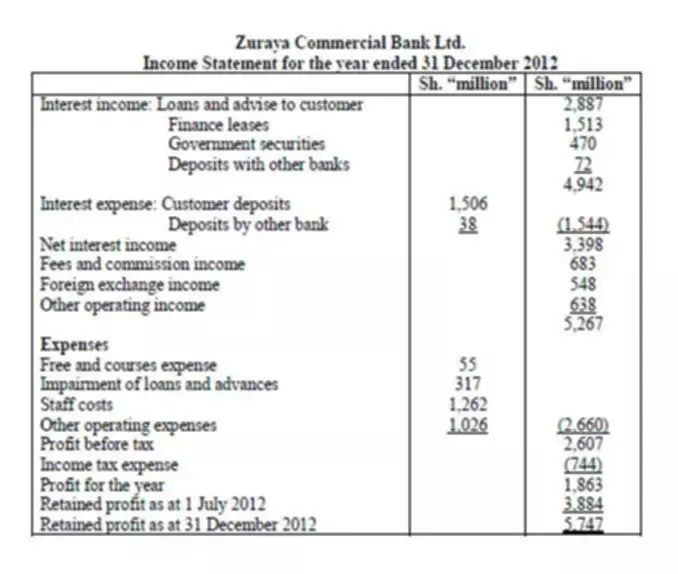Removing the Impact of Foreign Exchange Translation from Financial Analysis
27 April 2021Content

Instead, it reflects the impact of foreign exchange fluctuations on a company’s financial statements. The foreign currency translation reserve means the accumulated gain or loss resulting from the translation of financial statements denominated in a foreign currency into the company’s reporting currency. After booking the initial investment, the company reports its share of the unconsolidated subsidiary’s translated net income to the profit & loss statement, increasing/decreasing the investment balance.
The guidance does not specify the exchange rate to be used to translate a foreign entity’s capital accounts. However, in order for appropriate elimination of capital accounts in consolidation to happen, historical exchange rates should be used. Businesses with international operations must translate their transactions to their functional currency, which is generally their domestic currency. With the fluctuation in the foreign exchange, foreign currency translation the value of the company’s assets and liabilities is also subject to variations. When a company’s functional currency (the dollar in our example) increases in value relative to the secondary currency (the euro in our example), a U.S.-based company will experience a functional gain due purely to the change in the exchange rate. This is because the functional currency can now be converted into a larger number of the foreign currency.
Company
General Electric’s CTA was a negative $4.3 billion
in 2005 and a positive $3.6 billion in 2006. The CTA detail may appear
as a separate line item in the equity section of the balance sheet, in
the statement of shareholders’ equity or in the statement of
comprehensive income. The need to exchange currency for use in a foreign market can result in various gains and losses. In most cases, international businesses record and must report all of their transactions in a single currency, referred to as the functional currency. The functional currency is typically the company’s home currency, though another nation’s currency may be selected for a business based in a country with an unstable currency.
Functional currency is normally the currency of the primary economic environment (or country) in which it operates and generates and expends cash. The local country’s currency is not always the functional currency, however. An entity that works closely with a parent or sister company may have its functional currency considered to be that of the parent or sister company. Currency
translation risk occurs because the company has net assets, including
equity investments, and liabilities “denominated” in a foreign
currency. For this example, we’ll book a journal entry (see Step 5 below) for the SGD location so that you can see how this impacts the consolidated balance sheet. You’ll need to create an account for both Other Comprehensive Income and Accumulated Other Comprehensive Income if you don’t have those already.
Foreign currency transactions
Get your money quicker with recurring and usage-based accounts receivable automation. Control your costs with SoftLedger’s accounts payable automation and approval workflows. Keep up-to-date on the latest insights and updates from the GAAP Dynamics’ team on all things accounting and auditing. The CTA in OCI is a plug figure to make the translated
debits equal credits. This ultimately gives you a balanced consolidated number without performing a single manual calculation. Easily aggregate transactions and activities across your organization with SoftLedger.
He is a CPA who has held various management roles in public accounting, corporate finance, accounting consulting, sales, and business development. To solve this imbalance at the consolidated level, SoftLedger automatically books the CTA entry at the parent level under Accumulated Other Comprehensive Income. Now you can navigate to Settings and under “Accounts” set the default https://www.bookstime.com/articles/bookkeeping-and-payroll-services settings. Select your desired accounts in the “Financial Close” section to be used in the automatic journal entry calculations. To help you accurately enter a CTA journal entry, here’s a step-by-step overview of how to do so in SoftLedger. In the example above, you can see that the company would have inaccurately recorded its net income if the CTA of $935 was not recorded.
Step 4: Set Up System Account Default Settings
Because the use of different exchange rates causes an imbalance, Currency Translator adjusts the data. Currency Translator supports FASB 52, so fluctuations in the exchange rates are recorded as equity, not income. If you are modeling a company in a country with high inflation and the parent company is in a country with low inflation, re-measure the company financial statements before translation. The consolidated cash flow statement includes a row called Effect of Exchange Rate on Cash. This row adjusts for the effects of consolidated exchange rate differences in cash flow statement accounts.
Let us assume ABC Ltd is into manufacturing and selling medicines and other medical-related products. Thus, while reporting its financial statements, it has to consolidate the earning of all the branches and subsidiaries of all the countries for reporting.However, to do so, it has to convert the financial statements into the country’s currency, where it has its main operation. This process involves a lot of hindrances concerning currency fluctuations, economic conditions of the different countries, consumption of time, etc. To calculate the cumulative translation adjustment (CTA), businesses can first identify assets that were acquired in another country.
What Is a Cumulative Translation Adjustment (CTA)?
While the CTA can be positive or negative, it is generally considered a non-cash item that does not impact a company’s cash flow. Overall, the CTA is an important accounting tool that helps companies manage the impact of currency fluctuations on their financial statements. Financial statement trends for companies with foreign subsidiaries can’t always be taken at face value. Changes in foreign currency exchange rates can mask both concerning and encouraging trends in foreign subsidiaries. Therefore, understanding the overall trends of a company’s foreign operations through a constant currency analysis can portray a different picture than U.S. The economic effects of an exchange rate change on a foreign operation that is an extension of the parent’s domestic operations relate to individual assets and liabilities and impact the parent’s cash flows directly.

No need to take chances with the complexities arising from foreign currency accounting. This requires the advance to not be anticipated to be settled in the foreseeable future, which effectively is interpreted to be through the date the investment is liquidated. If the criteria are met, the translation gain or loss recognized on the stand-alone company’s income statement is reclassified to other comprehensive income upon consolidation.
Removing the Impact of Foreign Exchange Translation from Financial Analysis
The global entity operates in USD, and SGD is a subsidiary operating in SGD. A complete solution built to streamline your faith-based organizations’ financial management and accounting processes. SoftLedger’s venture capital accounting software is feature-rich to support all your consolidation needs. Control your working capital with SoftLedger’s cash flow management software and tools. For more information on foreign entity due diligence, contact a member of the BKD Transaction Services team.
What are the two methods for adjusting foreign currencies?
There are two main methods of currency translation accounting: the current method, for when the subsidiary and parent use the same functional currency; and the temporal method for when they do not.
However, because the consolidated rates for equity and retained earnings are different than those for assets and liabilities, the consolidated balance sheet may not balance. The CTA equals the amount that is required to balance the consolidated balance sheet. As uncertainty continues across the globe related to monetary policy, political environments, and economic and national stability, companies will need to proactively manage their foreign currency translation risk exposures. Because derivatives and hedging is a vast topic, we’ll save further discussion of that topic for a future post!